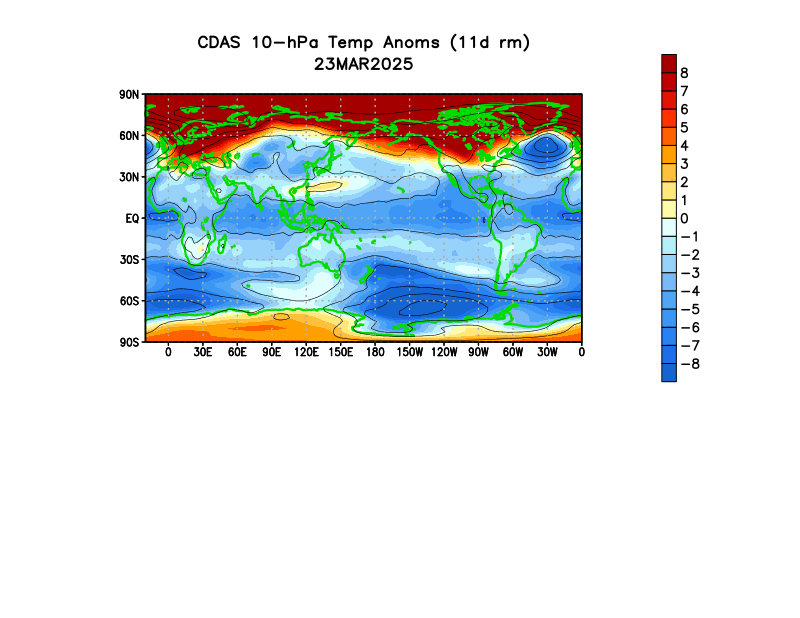The upper stratosphere is showing signs of additional warming over the Himalayas and Southeast Asia. Posted above is the animation over the past 30 days of the 10 millibar layer of the stratosphere, considered the upper stratosphere.
Looking down towards the Himalaya Mountain range, we see there has been a trend of increasing warm temperature anomalies. The mountain range is one of the ideal spots for stratospheric warmings, as air is easily provoked to be forced up and into upper levels of the atmosphere. It was in the past several weeks that we saw a sudden stratospheric warming originate from the very same mountain range. While we are at the end of February and it would take a month to see this warming propagate down to the surface, the stratosphere does not effectively 'shut down' for the winter until well into the spring and into summer. Until then, stratospheric warmings are still on the table.
The EP Flux forecast at the bottom of this multi-panel image will also be on the rise in the next several days. This increase means the stratosphere is becoming more supportive of warming in the stratosphere. Personally, I don't believe we will see another sudden stratospheric warming in the next 10-14 days. However, that increasing warmth in the Himalayas will be something to watch- if it is able to strengthen and detach from that mountain range into the Arctic, we could then see a solid sudden stratospheric warming event. Climatologically, that chance is decreasing by the day, but in weather, anything is possible.
Andrew
Looking down towards the Himalaya Mountain range, we see there has been a trend of increasing warm temperature anomalies. The mountain range is one of the ideal spots for stratospheric warmings, as air is easily provoked to be forced up and into upper levels of the atmosphere. It was in the past several weeks that we saw a sudden stratospheric warming originate from the very same mountain range. While we are at the end of February and it would take a month to see this warming propagate down to the surface, the stratosphere does not effectively 'shut down' for the winter until well into the spring and into summer. Until then, stratospheric warmings are still on the table.
The EP Flux forecast at the bottom of this multi-panel image will also be on the rise in the next several days. This increase means the stratosphere is becoming more supportive of warming in the stratosphere. Personally, I don't believe we will see another sudden stratospheric warming in the next 10-14 days. However, that increasing warmth in the Himalayas will be something to watch- if it is able to strengthen and detach from that mountain range into the Arctic, we could then see a solid sudden stratospheric warming event. Climatologically, that chance is decreasing by the day, but in weather, anything is possible.
Andrew



3 comments:
Does this mean, that there could be another polar vortex collapse with cold weather moving into the US in March and April?
It's very unlikely at this time.
The biggest concern if this stratospheric warming event were to occur would be severe wx and major tornado outbreaks as we are in a period of time with higher wavelenghts, thus the cold air would not produce the same result as in winter, not to mention the Atlantic ridge begins to mature around this time period and gets stronger as the spring progresses, thus with a fighting cold air mass from any stratospheric warming event, I would be much more concerned about tornadoes than anything.
Post a Comment